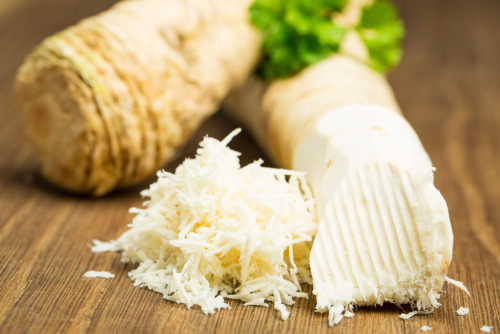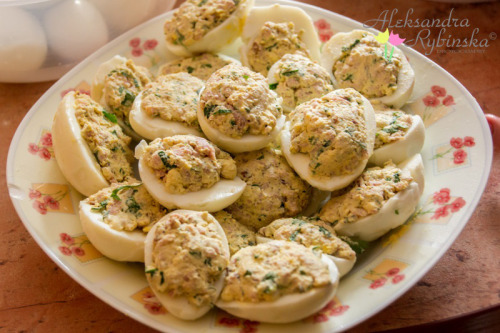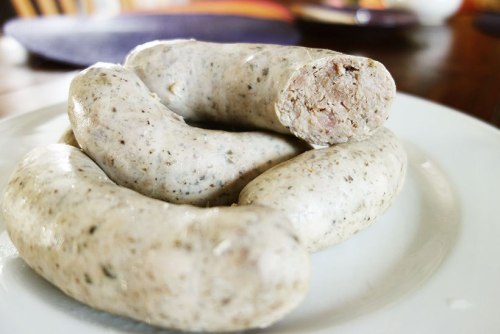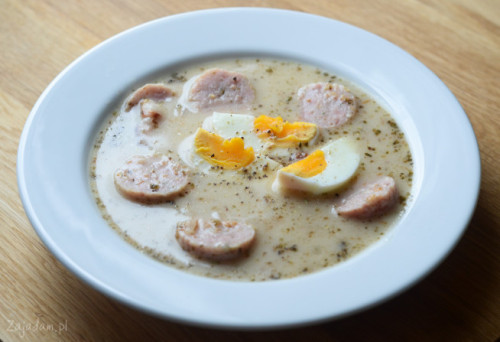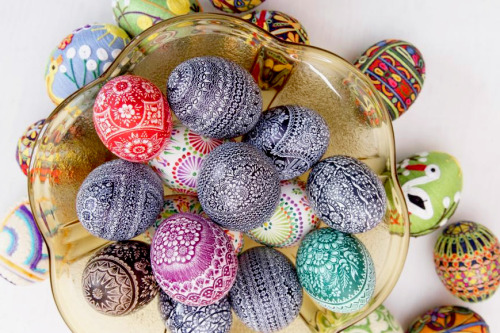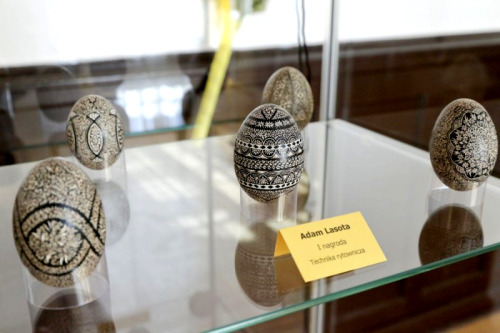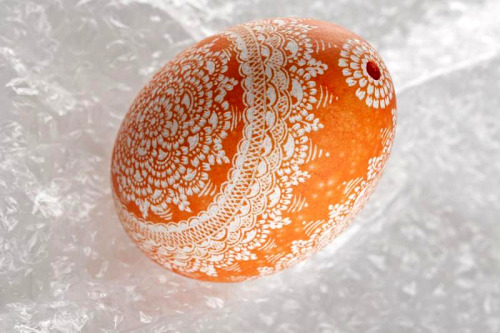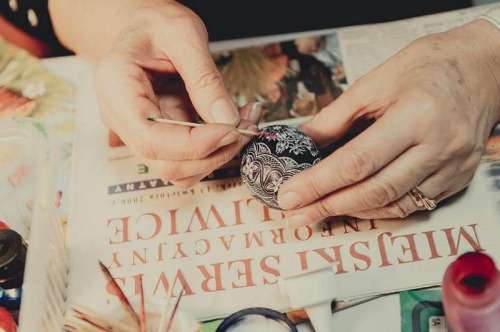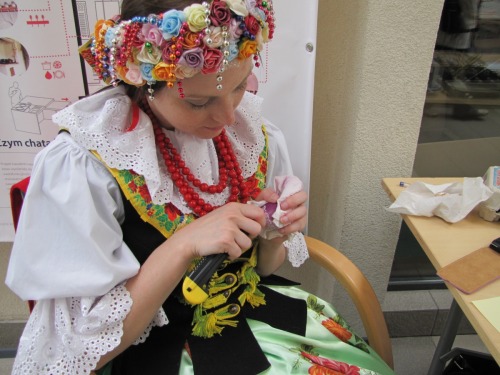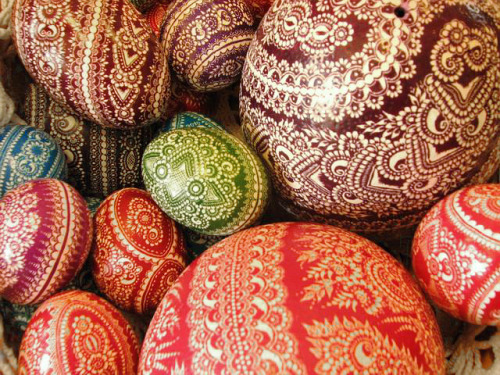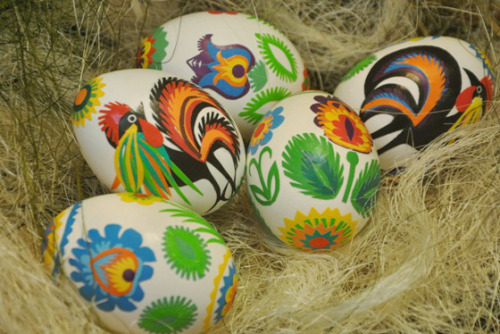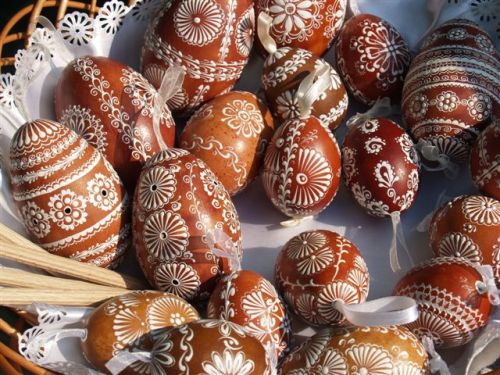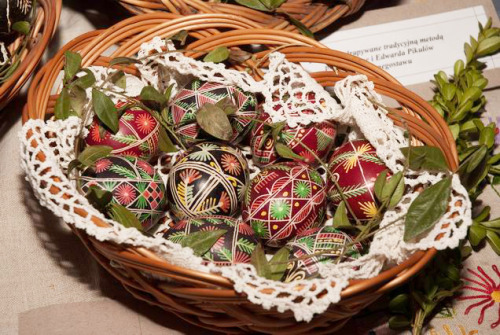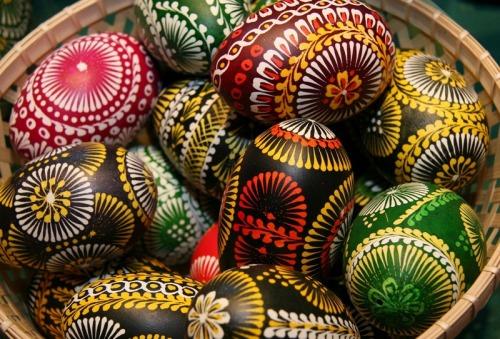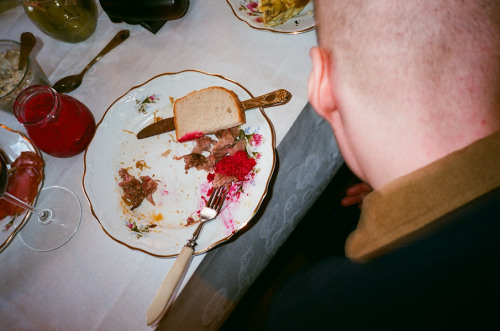#polish tradition
Silesiankroszonki (pisanki), from an exhibition of an annual competition held in Bytom, Poland.
In the old days the kroszonki / pisanki were gifted for people within communities along with Easter wishes. It was an old custom connected to pre-Christian times, observed in all regions of Poland.
A lot of the most iconic kroszonki from Silesia are decorated by dyeing the eggs first and then carefully scratching off the decorative motifs with the use of small sharp tools. Easter eggs made in this technique are known also as drapanki in other regions of Poland (derived from drapać - to scratch).
In Silesia their colour was extremely important. For example, red kroszonki were gifted as a message of love, while yellow ones meant rejection (polite way of saying no to others’ advances), green meant hope and wishes of a positive change in someone’s life, violet meant ‘you’re not welcomed in my house’, blue meant wishes of a good health, and black ones were gifted for the most important people in the community such as a priest or a village mayor (black was seen as the most elegant colour in the region of Silesia, and held a great importance also in the everyday life - Silesia is known as a coal mining region). However, the messages behind the colours of kroszonki were often changing between various areas in Silesia.
Images via silesiakultura.pl and radio90.pl.
Post link
Traditional pisanki (decorated Easter eggs) from various regions of Poland [all images via Wiano.eu].
Wordpisanki is derived from the verb pisać (”to write” or in old Polish: “to paint”) as a reference to old tradition of leaving messages or wishes on the eggs. Originating as an ancient pagan tradition, the custom of preparing pisanki was absorbed into Christianity. Nowadays, in a form of the “Easter eggs”, they are being put into the Easter baskets (remnants of old Slavic food offerings) for the blessing in churches on the Holy Saturday.
Check the pisanki tag for more examples.
Post link



